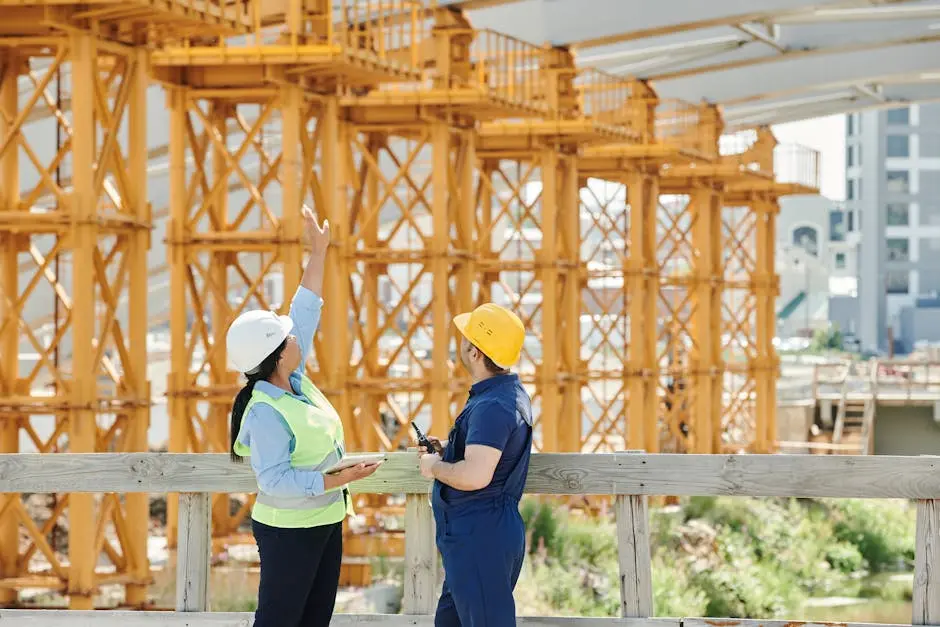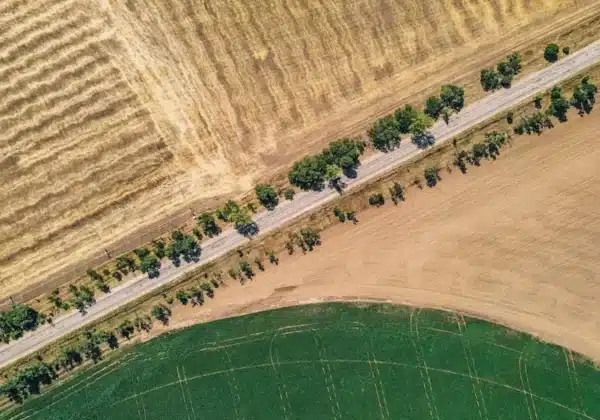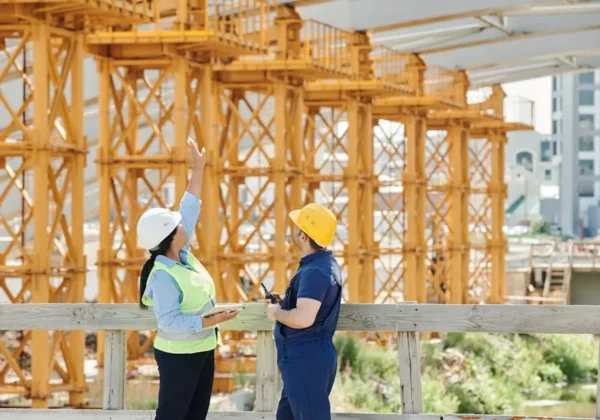Construction surveying can be a bit of a mystery if you’re not in the field. From understanding its role in different projects to the tools surveyors use, there are many facets to explore. Let’s walk through some of the most frequently asked questions about construction surveying and demystify this essential process.
1. Understanding the Basics of Construction Surveying
Construction surveying involves determining the three-dimensional position of key points that will guide the construction process. This ensures structures are built correctly and within the designated space. Surveying is foundational to any building project, ensuring that the groundwork is properly laid both literally and figuratively. It involves a range of techniques and tools to map out the land and provide critical data for engineers and architects. This process has evolved significantly, incorporating advanced technologies like GPS systems and laser scanning for more precise measurements.
The accuracy in construction surveying prevents future headaches by addressing potential issues at the onset. Imagine building a house only to find out the foundation is misaligned due to a surveying error. This mistake highlights how crucial accurate surveying is. By understanding the basics of construction surveying, you’re already a step ahead in ensuring the success of your project. From marking property boundaries to ensuring compliance with zoning laws, surveyors lay the groundwork for everything that follows.
2. Why is Construction Surveying Important?
Without accurate surveying, projects can face a range of issues from costly errors to structural problems. Surveying provides the precision needed to prevent these potential risks. Construction projects are dynamic, with many moving parts needing precise coordination. Surveying plays a critical role by ensuring that all elements—from basic site layouts to complex infrastructural details—align perfectly as per the design blueprints. This synchronization not only mitigates structural discrepancies but also helps avoid financial losses stemming from project delays or reworks.
Surveying is not just about maps and measurements; it’s about foresight. It anticipates potential obstacles like unexpected underground utilities or unsuitable soil conditions that could affect construction. By factoring these into the early stages, surveyors help steer the project away from unnecessary setbacks. Importantly, this phase of construction aligns closely with compliance checks, ensuring that all regulatory aspects are scrupulously adhered to, thereby safeguarding against legal disputes and environmental concerns.
3. How Does Surveying Differ from Other Engineering Fields?
While engineering focuses on designing and problem-solving, surveying is about measurement and layout. Surveyors provide the essential groundwork engineers need to design projects effectively. The nuanced role of a surveyor complements that of an engineer like a hand fits a glove. Surveyors chart the territory, detailing the minutiae of the land’s topography and boundaries, which in turn serves as a canvas for engineers to design safe, efficient, and functional structures.
Surveying demands a strong understanding of geometry and geography, which merge to create a vivid picture of the environment where construction will occur. This discipline is akin to an art form in its own right, requiring precision and an eye for detail. Engineers rely on this mapped-out topographical data to make informed design decisions that consider every natural intricacy and man-made regulation. This symbiotic relationship ensures that from planning to execution, projects remain seamless and progressive.
4. What Tools Do Surveyors Use?
From total stations to GPS devices, surveyors use an array of tools to measure angles and distances accurately. These tools ensure that all measurements are precise and reliable. Traditional tools like theodolites are pivotal for their precision in measuring angles, an essential aspect in laying out accurate structures and boundaries. Meanwhile, modern advancements like GPS technologies offer unparalleled speed and accuracy, crucial for large-scale developments.
Technology has dramatically enhanced the field with innovations like 3D laser scanning, which provides highly detailed spatial data for informed decision-making. These sophisticated tools allow for real-time data collection and analysis, streamlining the project lifecycle from site assessment to completion. By maintaining a balance between traditional and modern methodologies, surveyors ensure data integrity and project efficiency, reflecting their adaptability in an ever-evolving field.
5. Different Types of Surveys Used in Construction
Construction surveying includes boundary, topographic, and site layout surveys. Each plays a unique role in various stages of the construction process, tailored to specific needs. For instance, boundary surveys define the legal perimeters of a project site, ensuring all development occurs within authorized limits, thus averting any potential boundary disputes.
Topographic surveys present detailed elevation data, essential for projects like roads and bridges, which require a deep understanding of terrain dynamics to ensure safe and efficient construction. Site layout surveys are another critical type, meticulously setting out the precise locations for all structural elements according to design plans. Each of these surveys provides layers of valuable data, collectively harmonizing the intricate symphony of a construction project.
6. How is Technology Impacting Construction Surveying?
Advancements in technology, like drones and 3D laser scanning, are transforming how surveys are conducted by improving speed and accuracy. Drones, with their aerial capabilities, offer a comprehensive view of sites, enhancing the efficiency of surveys especially in large or difficult-to-access areas.
3D laser scanners bring unprecedented detail, creating virtual models that allow for precise planning and risk assessment. Such tools revolutionize traditional methodologies, reducing the time-intensive data collection procedures and increasing the throughput of actionable insights. The integration of geographic information systems (GIS) further supports this innovation, offering interactive data models that exacerbate survey control and enhance planning strategies.
7. Common Challenges Faced by Surveyors
Weather, terrain difficulties, and equipment malfunctions can present challenges. Surveyors need to adapt quickly to overcome these obstacles. Extremely windy conditions can skew measurement accuracy, whereas rugged terrains might impede the placement of surveying equipment. Such external factors demand a high level of adaptability and problem-solving, reinforcing the need for surveyors to be well-equipped and prepared for unexpected issues.
Environmental conditions, technological glitches, and even human error can contribute to delays or inaccuracies in surveying results. Undoubtedly, surveyors must consistently update their skills and tools to ensure reliability and overcome potential barriers. Learning from past experiences and innovations play a vital role, helping future projects withstand similar challenges. It’s this ongoing learning process that aids in upholding the rigor and precision that the field demands.
8. How Can Inaccurate Surveying Affect a Project?
Mistakes can lead to alignment issues, misplacement of structures, and even legal disputes. Ensuring accuracy is crucial to avoid costly errors and potential rework. An incorrect survey can result in a building sitting on the wrong plot, adding immense legal and financial implications for stakeholders involved. Such misalignments not only dishearten those envisioning the project but also delay timelines significantly.
The domino effect of inaccurate surveying could extend beyond physical limits; it can temper relationships and contracts, leading to disputes and litigations within partner networks. Therefore, every surveyor’s mantra should be to ‘measure twice, cut once.’ This infers the need to verify, check, and ensure every piece of data analyzed and presented is based on accurate and precise measurements, thus safeguarding the project from unplanned detours.
9. Who Can Perform Construction Surveys?
Licensed professional surveyors are qualified to perform construction surveys. They are trained and certified to provide accurate and legal evaluations. These professionals carry the credentials and maintain adherence to industry standards, assuring quality and dependability throughout the survey process.
Registered land surveyors possess a keen eye for detail and are well-versed in navigating the ever-evolving legal frameworks governing construction sites. Their expertise not only covers technical proficiencies but also encompasses a thorough understanding of the geographic, environmental, and regulatory nuances of the site they survey. By choosing qualified professionals, projects are naturally aligned with industry standards, ensuring the safeguarding of all project aspects.
10. How Does Surveying Contribute to Safety?
Accurate surveying minimizes risks associated with incorrect data, ensuring the safety and stability of all construction projects. Surveyors identify potential site hazards and risks, such as unstable ground or flood-prone areas, right at the planning stage.
Incorporating precise data helps fortify structures against potential natural adversities. This critical information allows engineers to design with these factors in mind, reduce potential risks, and enhance the stability of the overall design. By working proactively, surveyors provide invaluable data that shapes safe and sustainable structures, ensuring the longevity and durability of constructed visions.
11. The Role of Surveying in Project Planning and Design
Surveying provides critical data that informs the planning and design phases. This data ensures that engineers and architects work with real-world constraints. Understanding the land layout and conditions allows for design decisions that align with the terrain, winning both time and cost efficiencies during project development.
Surveying aids in optimizing resource allocation, coordinating logistics, and ensuring each design element fits harmoniously within designated spaces. Such detailed insights form the blueprint for successful project management and execution, bridging the gap between conceptual designs and tangible creations. With data-driven decisions, the chances of unforeseen contingencies reduce significantly, paving the way for streamlined workflows and smart project completion.
12. How Do Surveyors Ensure Precision?
Surveyors use precise tools, meticulous calculations, and double-checking methods to ensure every measurement adheres to high accuracy standards. They meticulously check data readings to eliminate variances that might otherwise go unnoticed.
Reliance on advanced instruments paired with rigorous validation processes and recalibration practices ensures that survey results are valid and reliable. Surveyors often incorporate redundant measurement approaches, verifying data accuracy at multiple stages. Such precision-oriented methodologies reflect their commitment to excellence and the trusted quality they bring to construction processes.
13. Exploring Career Opportunities in Surveying
As a career, surveying offers a blend of fieldwork and office tasks, diverse opportunities, and the chance to be a fundamental part of large projects. With advancements in technology, surveyors are now at the forefront of integrating cutting-edge tools into traditional practices, enhancing the visibility and scope of the profession.
A career in surveying invites those with a passion for exploration, precision, and technology to contribute to foundational projects across various sectors, from construction to environmental management. It offers a sense of fulfillment in knowing that your work provides the frameworks for future growth, urban development, and architectural progression. Increasing demand in this sector highlights its importance and reveals opportunities for aspiring professionals to carve out impactful careers.
14. Evolving Trends in the Surveying Industry
The industry is constantly evolving, with emerging trends such as automated processes and enhanced geographical information systems shaping the future. Automation reduces time and manual error, enhancing survey reliability and improving data turnaround times.
Gradual integration of AI and machine learning into surveying processes is elevating how data is captured, analyzed, and used. The cutting-edge of survey innovation lies in leveraging these technologies to predict project constraints and inform real-time modifications. Such trends underline the dynamic nature of surveying, echoing a future where it is intertwined with broader industry advancements while retaining its core principles.
15. Misconceptions About Construction Surveying
A common myth is that surveying is just mapping. In fact, it’s a dynamic field blending technology, measurement techniques, and legal expertise. Surveying encompasses a broader domain, intertwining technical, environmental, and regulatory considerations, propelling projects forward with certainty and precision.
The perception of surveyors simply as mapmakers overlooks the critical role they play in shaping topographies and environments. They don’t just map; they envision and realize possibilities, manage complexities, and deliver insights that keep projects aligned and compliant. Understanding the multifaceted role of a surveyor paves the way for greater appreciation and acknowledgment of their invaluable contributions to the construction realm.




